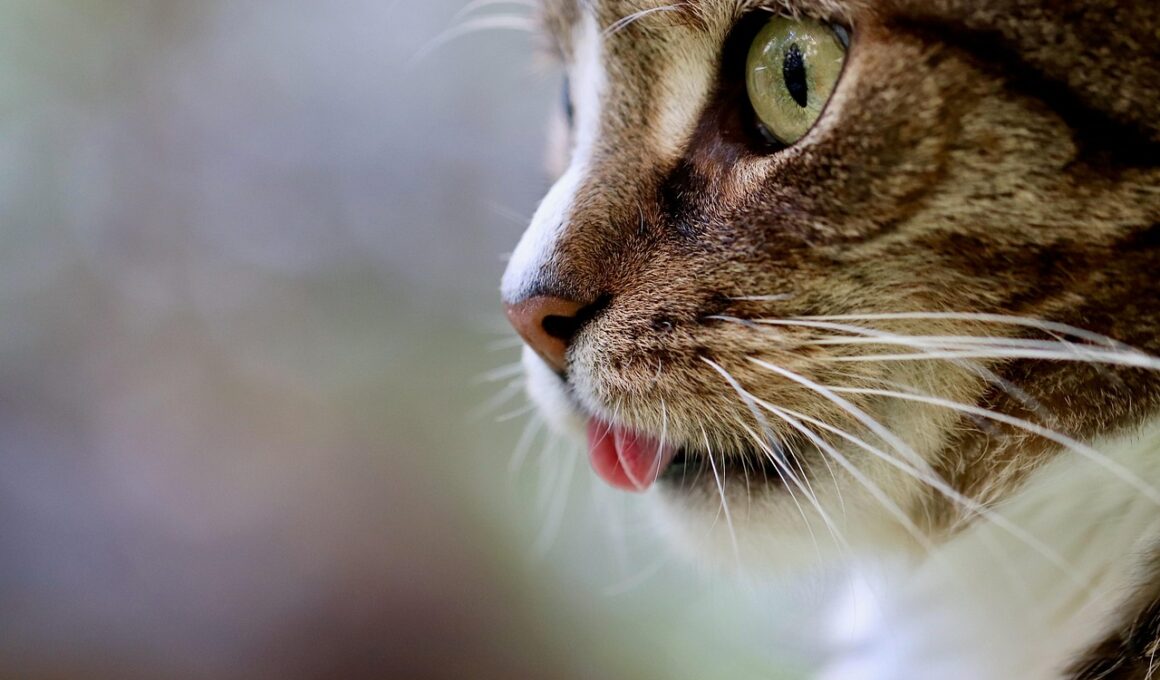Understanding Cat Behavior: Name Recognition Explained
Training cats to respond to their names might seem challenging, but with the right approach, it becomes much easier. Cats have distinct personalities, making it essential to tailor training methods to suit your feline friend. Understanding cat behavior is crucial when attempting to train them; it’s important to note that cats learn through positive reinforcement. This technique rewards them for desired behaviors, creating an association with their names. To initiate this process, choose a quiet environment free from distractions, ensuring your cat can focus on you during training sessions. Start by gently calling your cat’s name while presenting treats or toys they enjoy. Repetition is vital in reinforcing the connection between their name and the reward. Keep sessions brief yet engaging to prevent your cat from losing interest. Gradually, your cat will associate its name with positive experiences, making them more likely to respond when you call them. Always remain patient and consistent throughout the training process. Remember that every cat is unique, so progress may vary; some will respond quickly, while others may require more time and encouragement.
The Importance of Consistency
Consistency is vital in any training routine, especially for your cat’s name recognition. When you call your cat, always use the same tone and intonation to create familiarity. Cats are attuned to their owners’ voices, hence using a consistent calling method will help them understand they are being addressed. Along with this consistency, ensure that everyone in your household uses the same name and pronunciation. This coherence reduces potential confusion and establishes a clear understanding of your cat’s name. If multiple family members use different nicknames or names, it might confuse your cat and hinder its learning process. When you notice your cat looking at you when called, it’s crucial to reward them immediately with treats or affection. This further strengthens the relationship between their name and positive reinforcement. Moreover, try not to use your cat’s name in a negative context; for instance, avoid calling them when scolding. This can create a negative association. Instead, reserve your cat’s name for positive interactions, making them more likely to respond positively when called in the future.
Another key factor in training cats to recognize their names involves understanding their individual personalities. Some cats may be more inquisitive and trainable, while others are more independent, making them less responsive initially. Take the time to observe your cat’s behavior and preferences; using their favorite toys or treats can help engage them better during training sessions. Keep in mind that cats are naturally curious creatures, so tapping into their instincts can make the process more efficient. For instance, if your cat enjoys catching feather toys, integrate this into your training. Call their name while enticing them with a toy, rewarding them for their response. Ensure that the atmosphere during training is comfortable and free of stress. Creating a positive environment is essential in facilitating effective learning. The more relaxed your cat feels, the more likely they will be to engage and respond to their name. To maintain attention, practice the training in short bursts throughout the day, mixing in playtime and affection. This approach will keep the interactions enjoyable while reinforcing their name recognition.
Utilizing Play as a Training Tool
Incorporating play into name training can greatly enhance your cat’s willingness to respond. Most cats have playful natures, so using engagement and excitement during training is a winning strategy. Start your sessions when your cat is in a playful mood as this can elicit positive emotions associated with their name. Use various interactive toys or even simple household items to catch their attention while calling their name. Mix in fun games that include their name, like tossing a ball and calling them over. It reinforces their name recognition while providing enjoyment. When your cat responds, offer praise or treats, rewarding them for their effort. Aim to create a strong connection between their name and positive experiences. It’s also essential to allow them to explore their environment freely; if they show interests in outside activities, incorporate that into training too. For example, after a successful training session, allow outdoor playtime. This creates a balance of engaging exercises and positive reinforcement that will help solidify their name recognition training over time.
Timing in name training can significantly influence your cat’s responsiveness. Ensure you call your cat by name when they are most alert and focused, reducing the chances of distraction. Train during regular routines when your cat is naturally active, such as mealtime or playtime. This timing allows you to capture their attention better and enhances their connection with their name. Another effective method involves pairing your cat’s name with their everyday actions. For instance, call them by their name before serving food or when engaging them in play. By associating their name with pleasant experiences, you create positively reinforced behavior that helps with recognition. Observe how your cat reacts during training sessions, adjusting your approach based on their engagement level. If they seem disinterested or distracted, consider varying the methods or times of training. Adapting to your cat’s preferences and moods will result in effective name recognition more quickly without frustrating both you and your cat. Always be patient and understanding throughout the training process for optimal results.
Common Mistakes to Avoid
Training your cat to respond to their name might come with some hurdles, particularly if you fall into common pitfalls. One such mistake is calling your cat during unwanted scenarios. If your cat associates their name with being put in a carrier or taken to the vet, it may lead them to ignore their name while you call them. To combat such negative associations, ensure you call them in positive contexts, like during play or feeding. Furthermore, be cautious of your training sessions’ length. If you inundate your cat with long sessions, they might become bored or frustrated quickly. Keeping sessions brief, around 5-10 minutes, will maintain their interest and energy levels. Additionally, critique the environment during training; loud noises or other distractions may weaken their focus. Providing a quiet space for training will yield better results, fostering a more conducive learning atmosphere. Lastly, avoid harsh corrections; cats respond better to encouragement and rewards, which enhances their motivation to engage in future training.
Always celebrate small successes during name recognition training. Positive reinforcement is vital in shaping your cat’s behavior and building an effective bond between you and your furry friend. As your cat begins to respond to its name more consistently, celebrate those moments through treats or additional playtime. If they do not respond immediately, remember to maintain your patience and avoid frustration. Consistency and positive experiences will help solidify their name acknowledgment over time. Also, remember that every cat is unique, which means they will have varied learning curves. Therefore, adjust your training expectations and methods to suit your cat’s personality and learning pace. Maintain a relaxed atmosphere, as a stress-free cat will be far more willing to engage with the training. It’s essential to remain upbeat throughout the process, as your emotions can directly affect your cat’s behavior. Should your training sessions lead to breakthroughs, take the time to acknowledge and encourage this progress. Doing so will enhance their learning experience and foster a positive association with their name.


